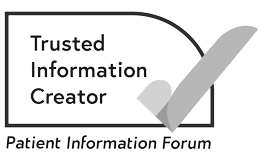Signs and symptoms of lung cancer
About lung cancer symptoms
If you have any possible symptoms of lung cancer it is important to get them checked by your GP. Many of the symptoms we mention can be caused by other lung conditions or by smoking. But it is always important to get them checked.
Lung cancer may not always cause symptoms early on. Sometimes it might be found when a person is having tests for another condition.
Common symptoms of lung cancer
The most common symptoms of lung cancer can include:
- a cough for 3 weeks or more
- a change in a cough you have had for a long time
- a chest infection that does not get better, or repeated chest infections
- feeling breathless and wheezy for no reason
- coughing up blood.
Other possible symptoms are:
- loss of appetite
- losing weight for no obvious reason
- feeling tired.
Less common symptoms
Less common symptoms of lung cancer may include:
- a hoarse voice for 3 weeks or more
- chest or shoulder pain that does not get better
- the tips of fingers becoming larger or more curved – this is called finger clubbing.
Symptoms of advanced lung cancer
If lung cancer is advanced, it may cause different conditions that have their own symptoms. For example, a condition called superior vena cava obstruction (SVCO) may happen if the cancer presses on a vein in the chest. Symptoms include swelling in the face, neck and arms. It needs to be treated straight away.
If the cancer has spread to other parts of the body, symptoms will depend on where the cancer has spread. For example, if lung cancer has spread to the liver, you may feel sick, have itchy skin or have yellowing skin.
Lung cancer screening
In England, the NHS is beginning lung cancer screening to diagnose people at risk of lung cancer at an early stage. This is for people over 55 years who smoke or used to smoke. Your cancer risk is assessed by a healthcare professional. If this shows you are at higher risk of lung cancer, you will be invited to have a CT scan to take a detailed picture of the lungs.
There are plans to start similar screening programmes in Scotland and Wales.
We understand that showing any symptoms of what could be cancer is worrying. The most important thing is to speak to your GP as soon as possible. We're also here if you need someone to talk to. You can:
- Call the Macmillan Support Line on 0808 808 00 00.
- Chat to our specialists online.
About our information
This information has been written, revised and edited by Macmillan Cancer Support’s Cancer Information Development team. It has been reviewed by expert medical and health professionals and people living with cancer.
-
References
Below is a sample of the sources used in our lung cancer information. If you would like more information about the sources we use, please contact us at informationproductionteam@macmillan.org.uk
National Institute for Health and Care Excellence (NICE). Lung cancer – Diagnosis and management. Clinical guideline 2019. Last updated 2023. (accessed Nov 2023) Available at: https://www.nice.org.uk/guidance/ng122
European Society for Medical Oncology (ESMO). Small-cell lung cancer: ESMO clinical practice guidelines for diagnosis, treatment and follow-up. 2021. (accessed Nov 2023). Available at: https://www.esmo.org/guidelines/guidelines-by-topic/esmo-clinical-practice-guidelines-lung-and-chest-tumours/small-cell-lung-cancer
European Society for Medical Oncology (ESMO). Early and locally advanced non-small-cell lung cancer (NSCLC): ESMO clinical practice guidelines for diagnosis, treatment and follow-up. 2017. eUpdate 01 September 2021: New Locally Advanced NSCLC Treatment Recommendations (accessed Nov 2023) Available at: https://www.esmo.org/guidelines/esmo-clinical-practice-guideline-early-stage-and-locally-advanced-non-small-cell-lung-cancer
European Society for Medical Oncology (ESMO). ESMO expert consensus statements on the management of EGFR mutant non-small-cell lung cancer. 2022 (accessed Nov 2023). Available at: https://pubmed.ncbi.nlm.nih.gov/35176458/
Date reviewed

Our cancer information meets the PIF TICK quality mark.
This means it is easy to use, up-to-date and based on the latest evidence. Learn more about how we produce our information.
The language we use
We want everyone affected by cancer to feel our information is written for them.
We want our information to be as clear as possible. To do this, we try to:
- use plain English
- explain medical words
- use short sentences
- use illustrations to explain text
- structure the information clearly
- make sure important points are clear.
We use gender-inclusive language and talk to our readers as ‘you’ so that everyone feels included. Where clinically necessary we use the terms ‘men’ and ‘women’ or ‘male’ and ‘female’. For example, we do so when talking about parts of the body or mentioning statistics or research about who is affected.
You can read more about how we produce our information here.




